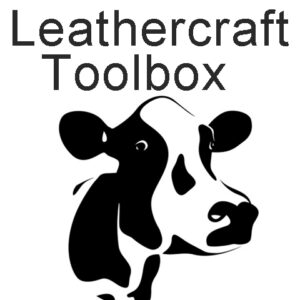Ever wondered which countries are the top producers of leather? Where is leather made and what does the process involve? In this post I am doing a deep dive into the world of leather production.
Leather is mostly made from the animal skins of cows, sheep, pigs, goats and other exotic animals. China, India, Brazil, Italy, Russia, South Korea, Argentina and the USA are the world’s top 8 producers of leather. The global leather goods market was worth $243 Billion Dollars at the end of 2022.
Which countries produce the most leather worldwide.
Which countries produce the most leather.
- China (25%)
- Brazil (9.5%)
- Russia (7%)
- India (6.4%)
- Italy (6.3%)
- South Korea (4.8%)
- Argentina (3.4%)
- USA (3%)
- Mexico (2.7%)
- Turkey (2.2%)
As of 2020 these 10 countries make up 70% of the world’s total leather production. There are a number of other countries that produce leather, but rather export it to other countries. A big producer of exotic leather is Australlia, who has a large Kangaroo population. Check out my post on Kangaroo leather.
Which countries export most of their leather.
- Italy
- USA
- China
- South Korea
- UK
- Mexico
- Poland
- Pakistan
- New Zealand
- Canada.
Where is leather made
Leather is made in a tannery. What is tanning? Tanning is the process whereby raw animal skins are treated to produce leather. Tanning is a process that involves permanently altering the protein structure of the skin in order to make it more durable. Tanning also prevents decomposition of the hide, which it would quickly do otherwise if not treated. The place where this process happens is called a tannery.
Tanning is a 5 step process:
- Cleaning phase
- Tanning phase
- Retanning phase
- Milling Phase
- Finishing phase
Cleaning Phase
Before any tanning can take place, the hides need to be cleaned. The skins need to be dehaired (remove wool or hair), degreased and desalted and then soaked in water for a period of time.
Tanning Phase
The hides can now begin the tanning process. Hides can be vegetable tanned, chrome tanned or use chrome free alternative tanning. The best method is vegetable tanning.
Retanning Phase
Retanning is the phase that adds visible character to the leather, by dyeing to give colour or adding oils which aid in making the leather softer to the touch.
Milling Phase
Milling is the phase that makes leather softer either by tumbling it in machines to further enhance the grain structure and add suppleness.
Finishing Phase
For this phase manufactures want to add oils, waxes, coats and dyes to protect the surface of the leather so as to avoid any damage to the leather surface.
What leather is mostly used or produced worldwide.
Cow or bovine leather makes up about 65% of all leather produced. Leather is really a by-product as cows are mainly used for their meat and dairy products. Bovine or cow leather is a good quality leather that is both strong and durable although slightly thicker than other leather.
Sheep skin leather up another 15% of the leather market. It is most commonly used for jackets and clothing.
11% leather comes from pigs. The leather produced from pigs has more waterproof qualities as it is slightly denser leather. It can be used for boots, gloves and other items.
9% production comes from goat leather. Goat leather is very soft and supple as it isn’t as thick as cowhide. Goat leather can have a slight sweet smell when first manufactured into a bag, gloves etc. but this smell will fade over time with regular use.
The remaining 1% is made up of exotic leathers like kangaroo, ostrich, alligator and many other types of leather. Have look at this post I wrote if you are interested in learning a bit more on exotic leather.
Which country makes the best leather.
Hands down the best leather and leather products come from Italy. Italy has a rich leather making history stretching from the Roman era right through up until today. No-one can match their craftsmanship or their dye making process. They also use a superior method of tanning known as vegetable tanning. The tanning takes longer but it uses natural products instead of chemicals which results in beautifully tanned leather. If you would like to see what Gucci handbags Amazon has to offer then here is a link to their site.
Conclusion
The leather industry was worth $420 billion dollars annually by the end of 2021 and is forecast to grow by another 6.2% between 2022 and 2030. A large portion of that industry manufactures shoes, furniture and clothing which supports millions of families and households around the world. Hopefully the industry will keep growing and but also start focussing more on sustainability.
